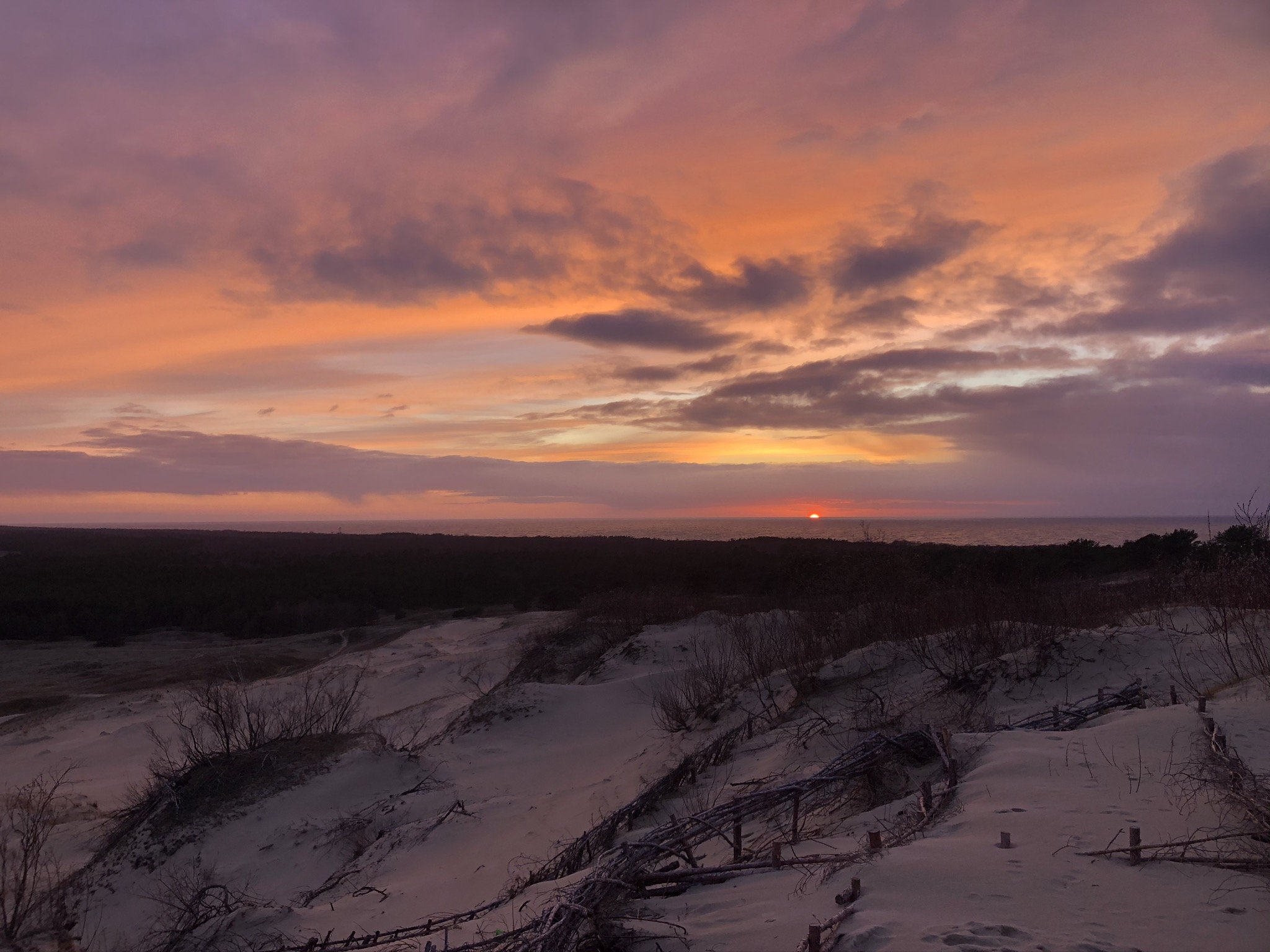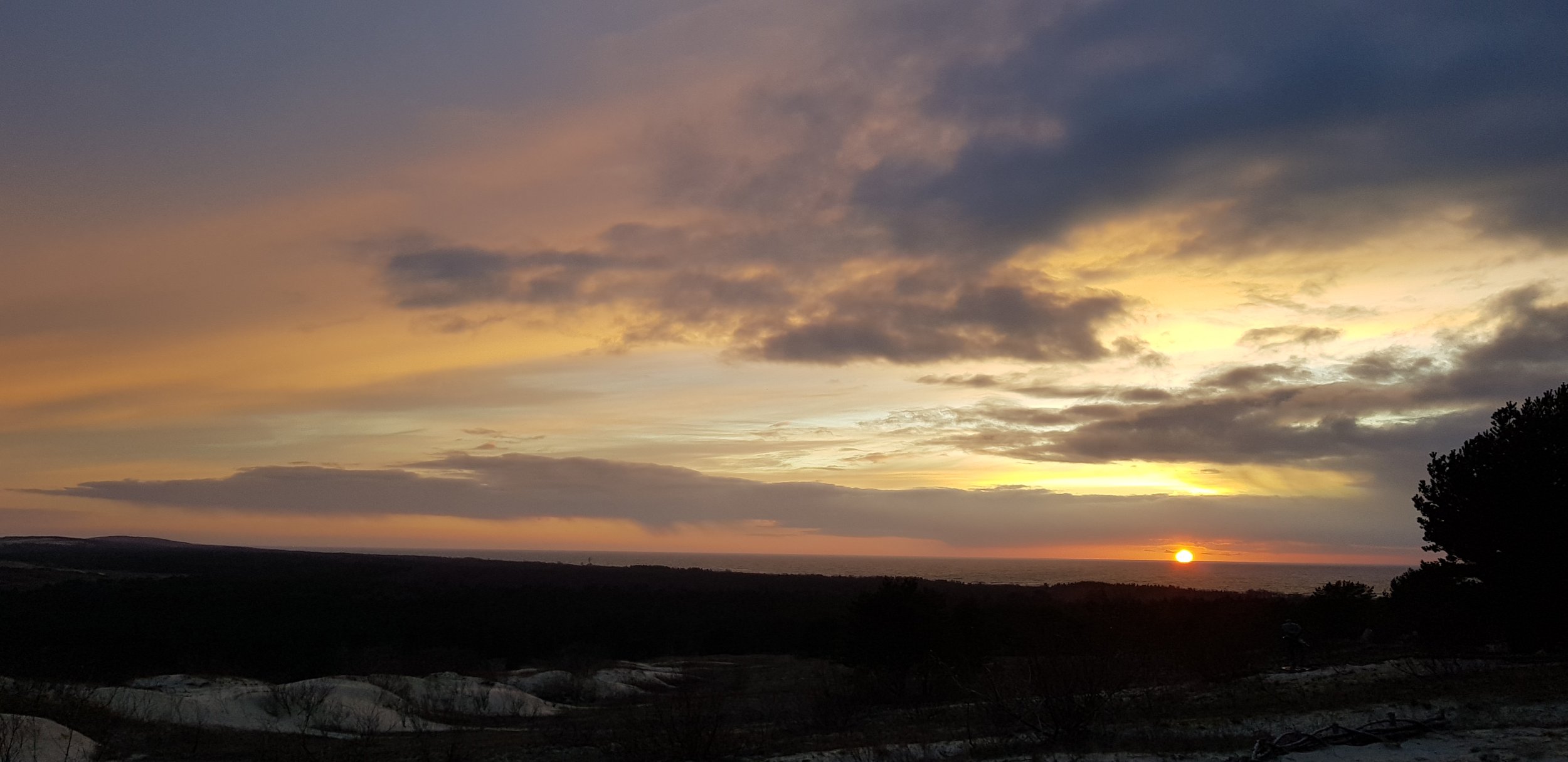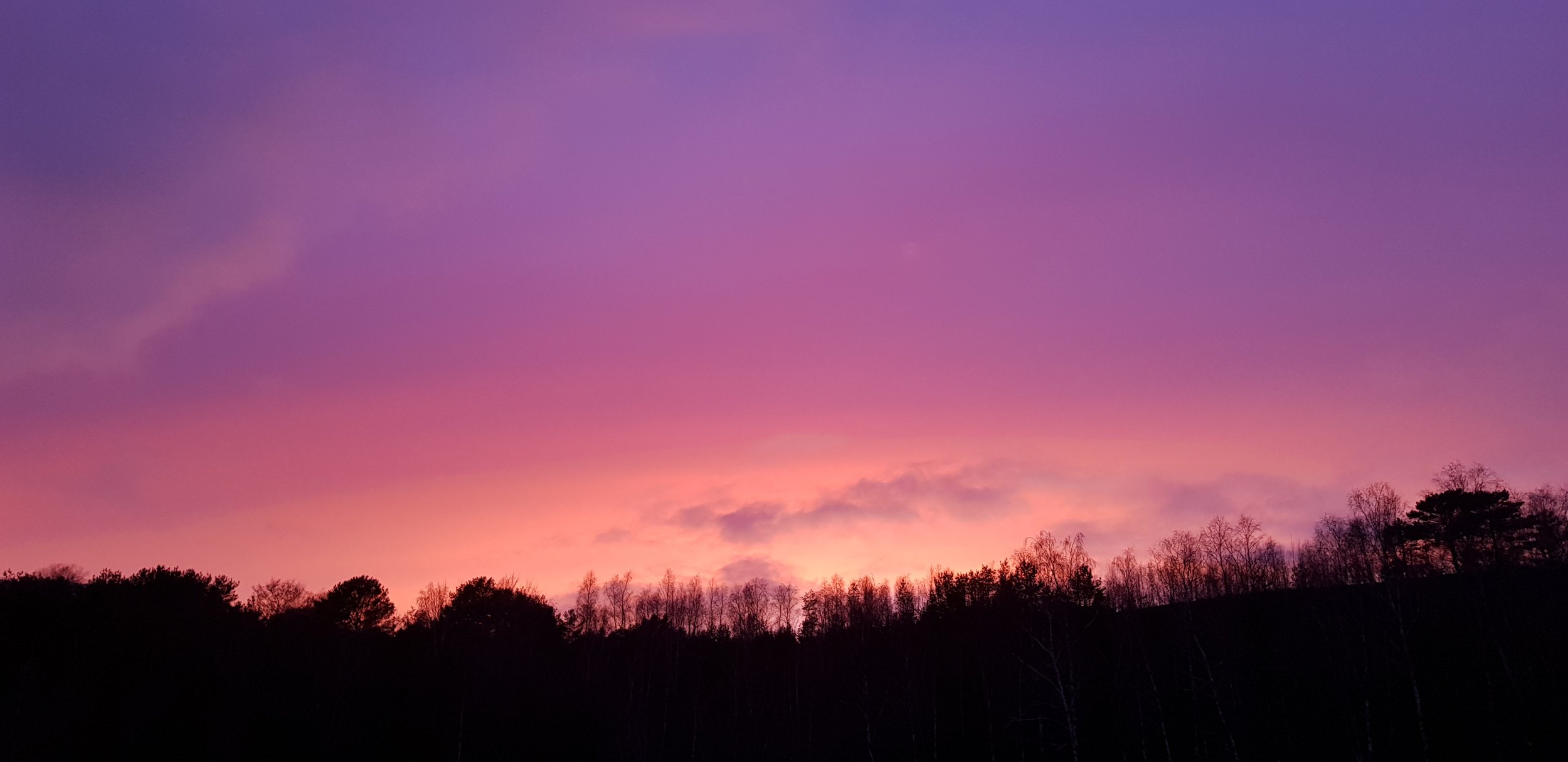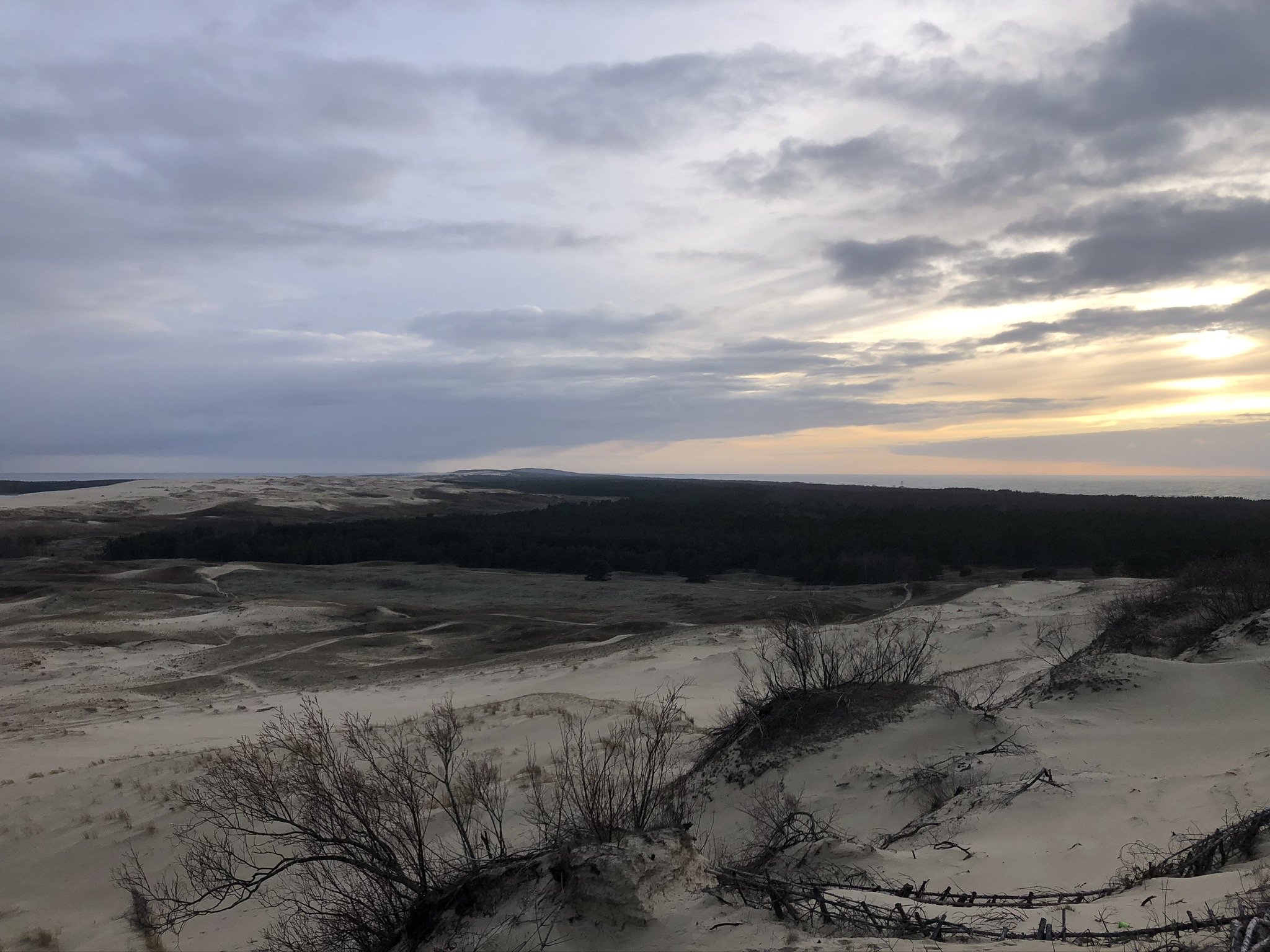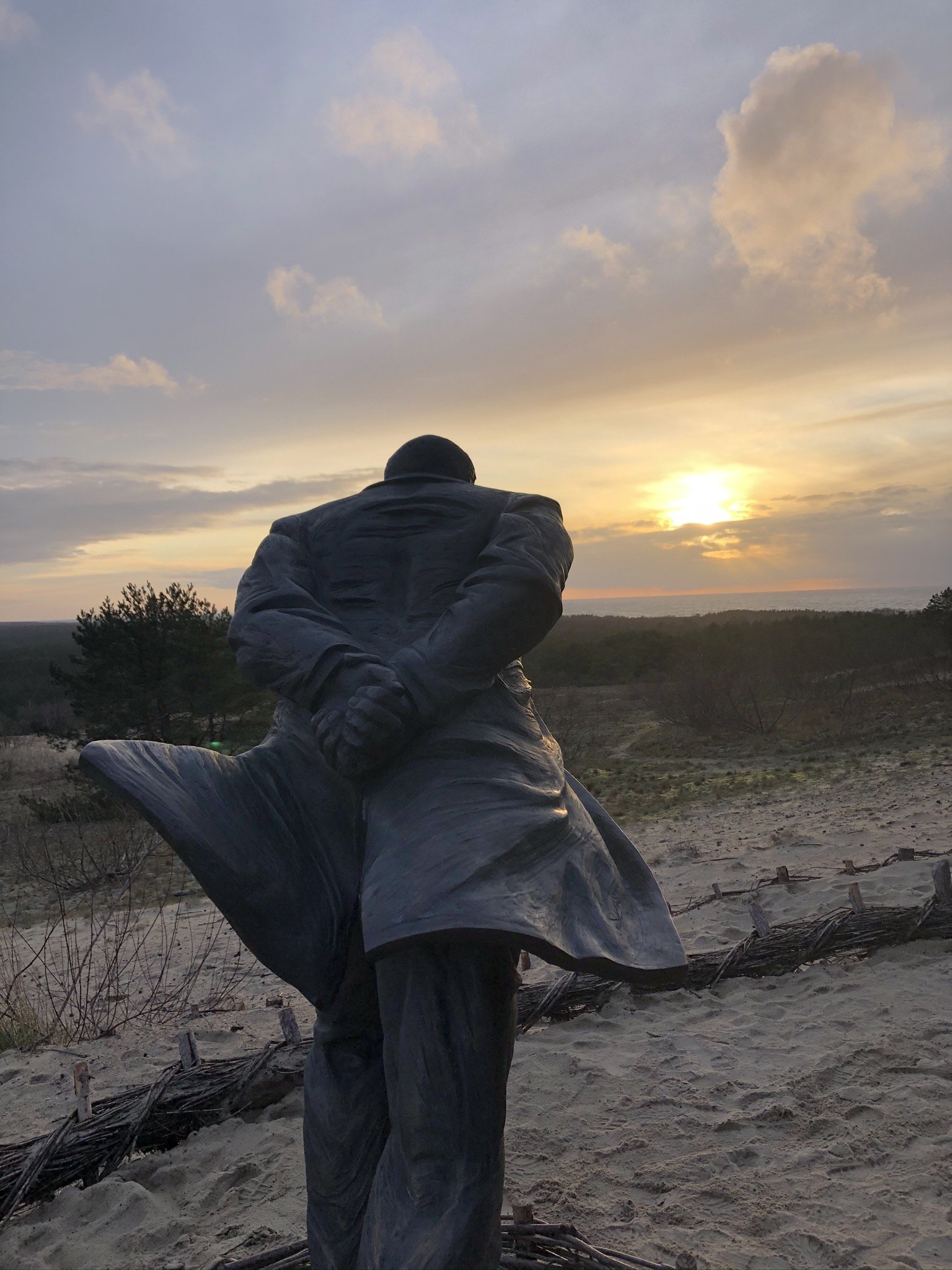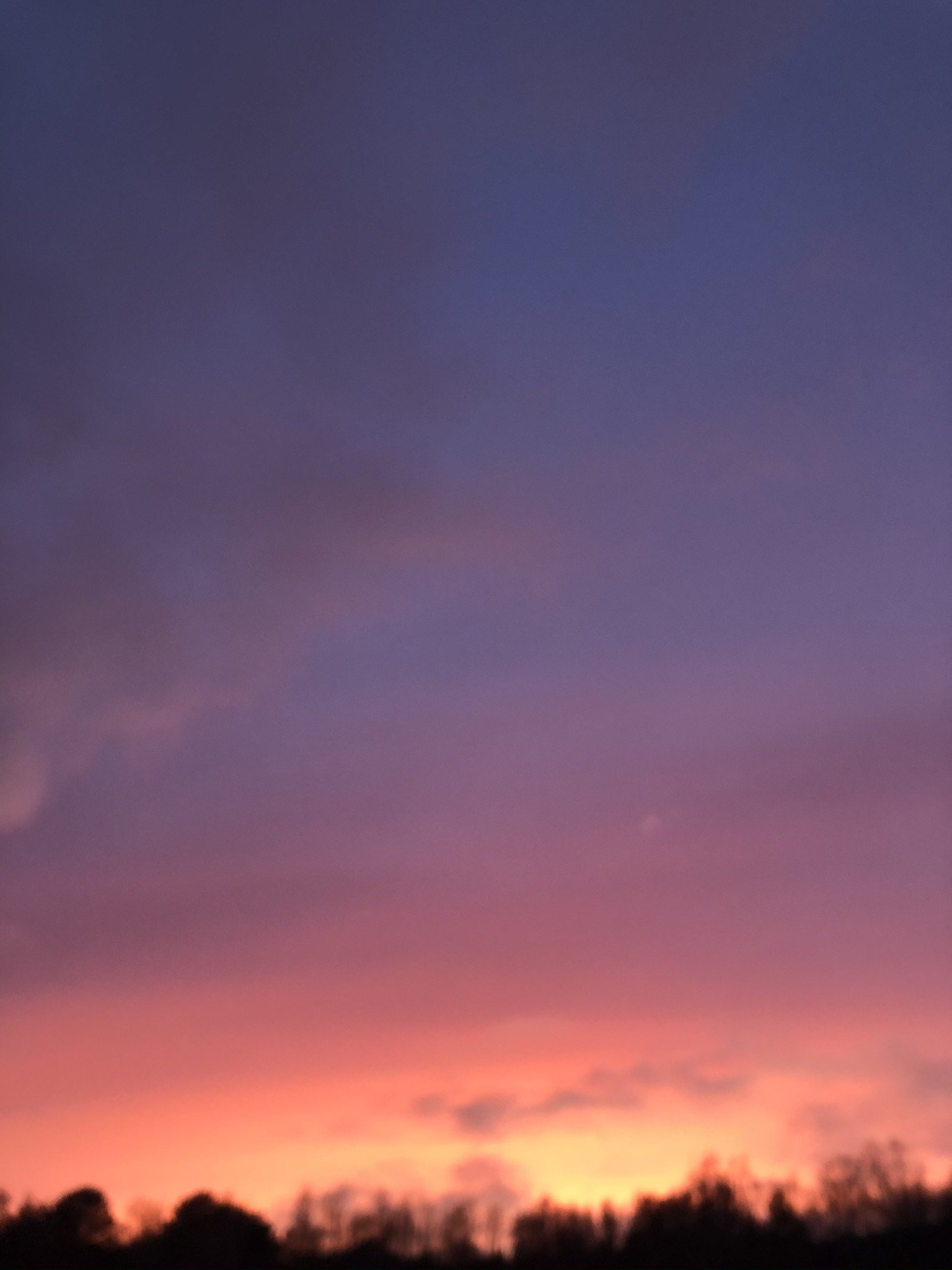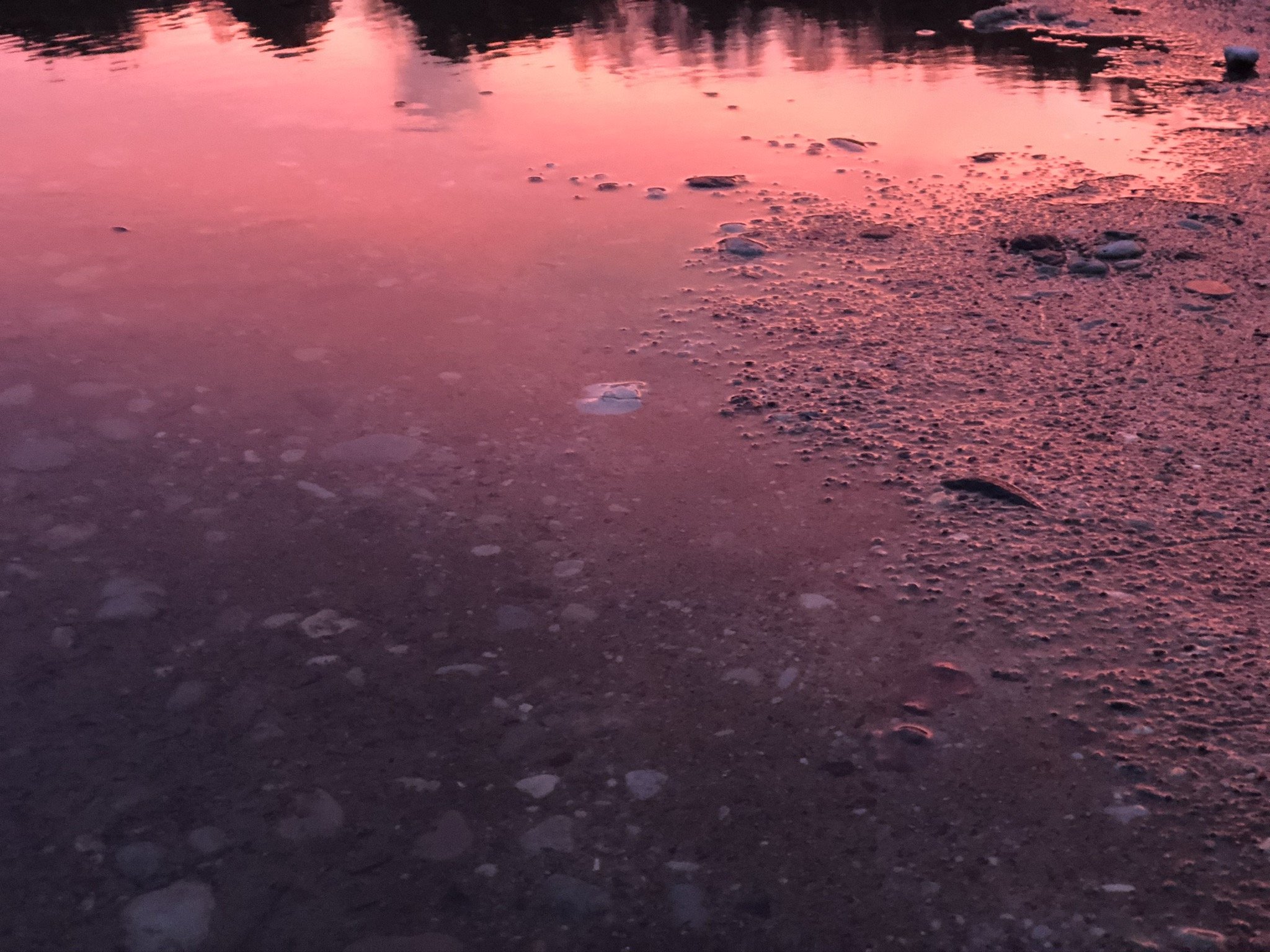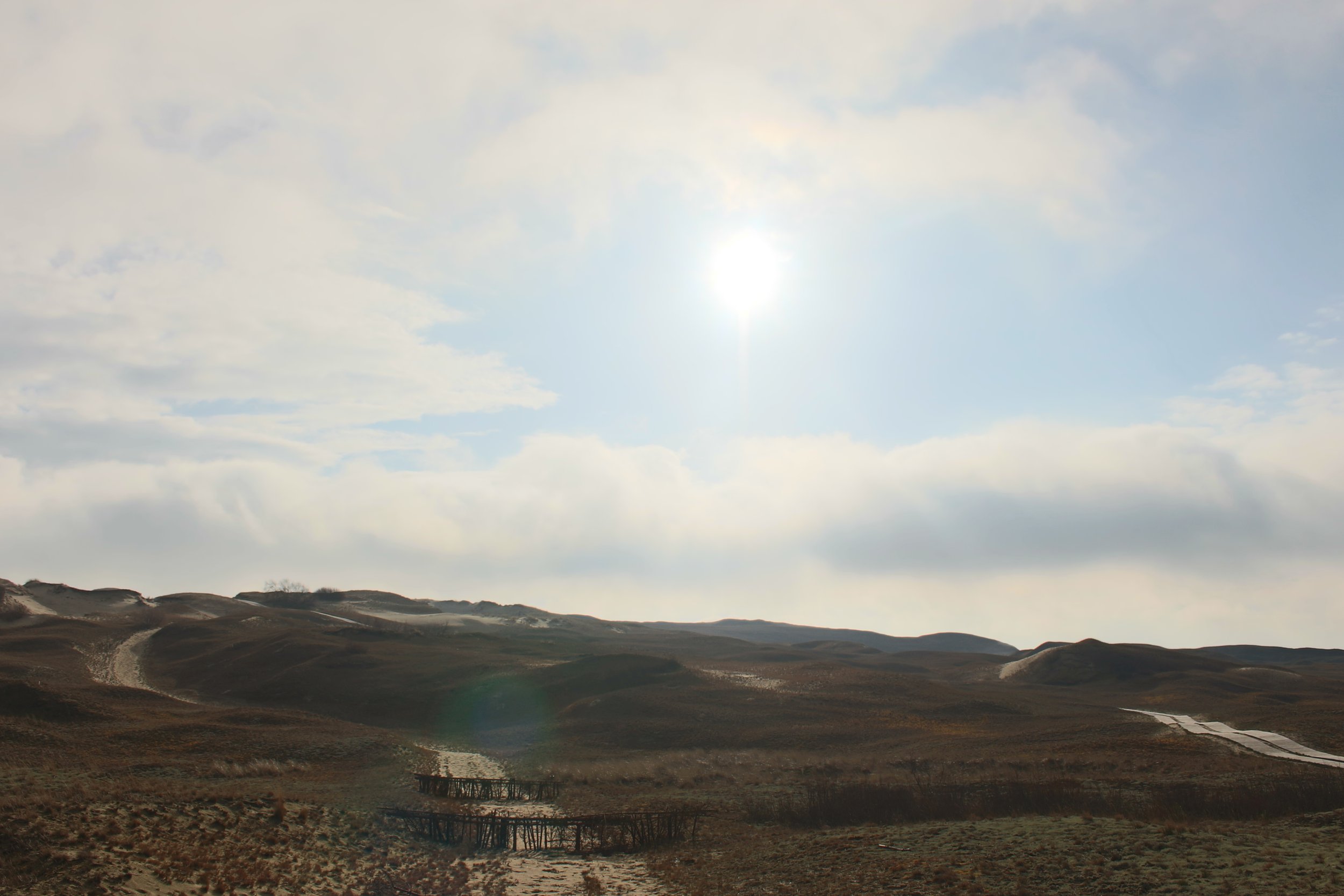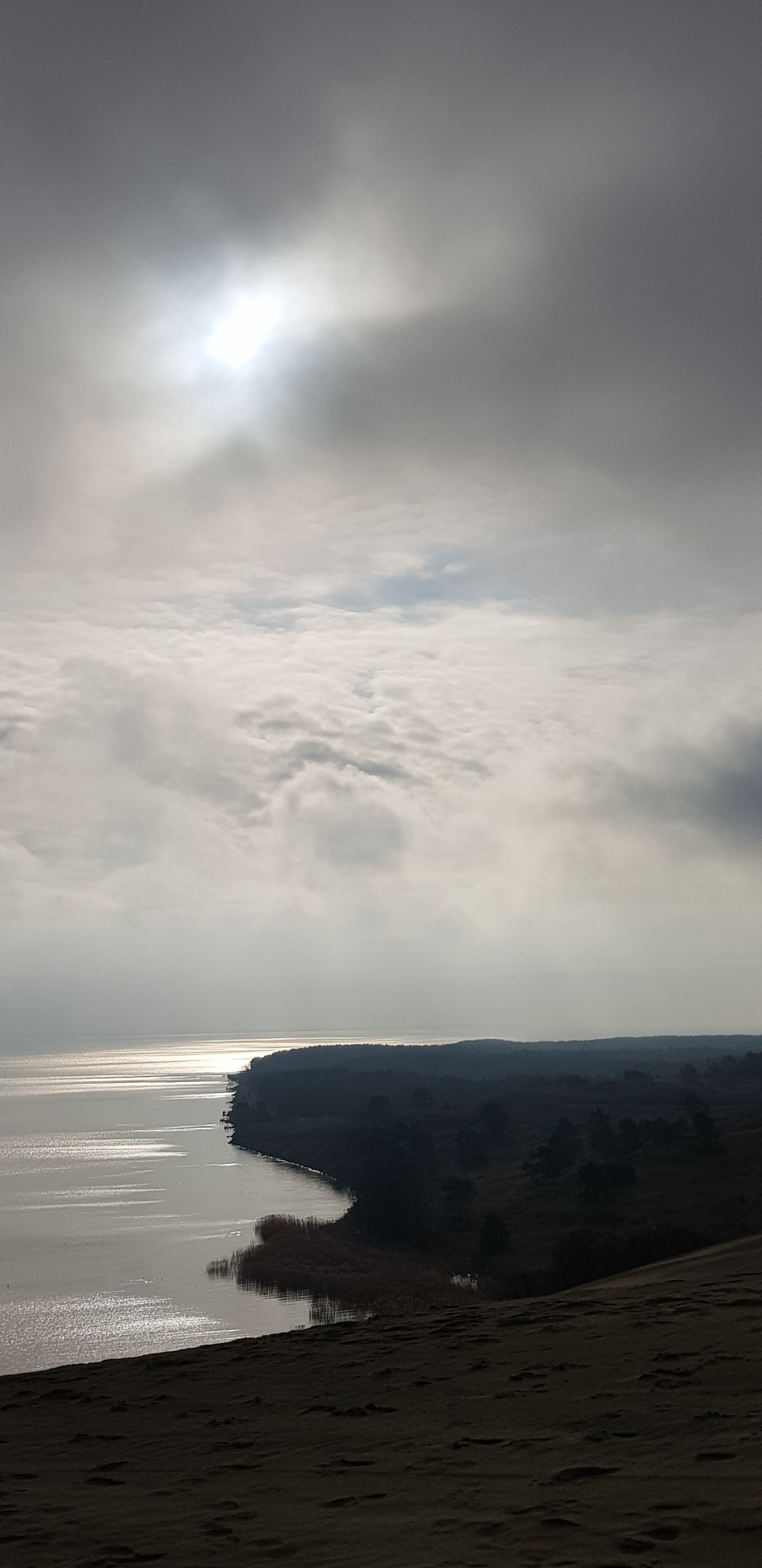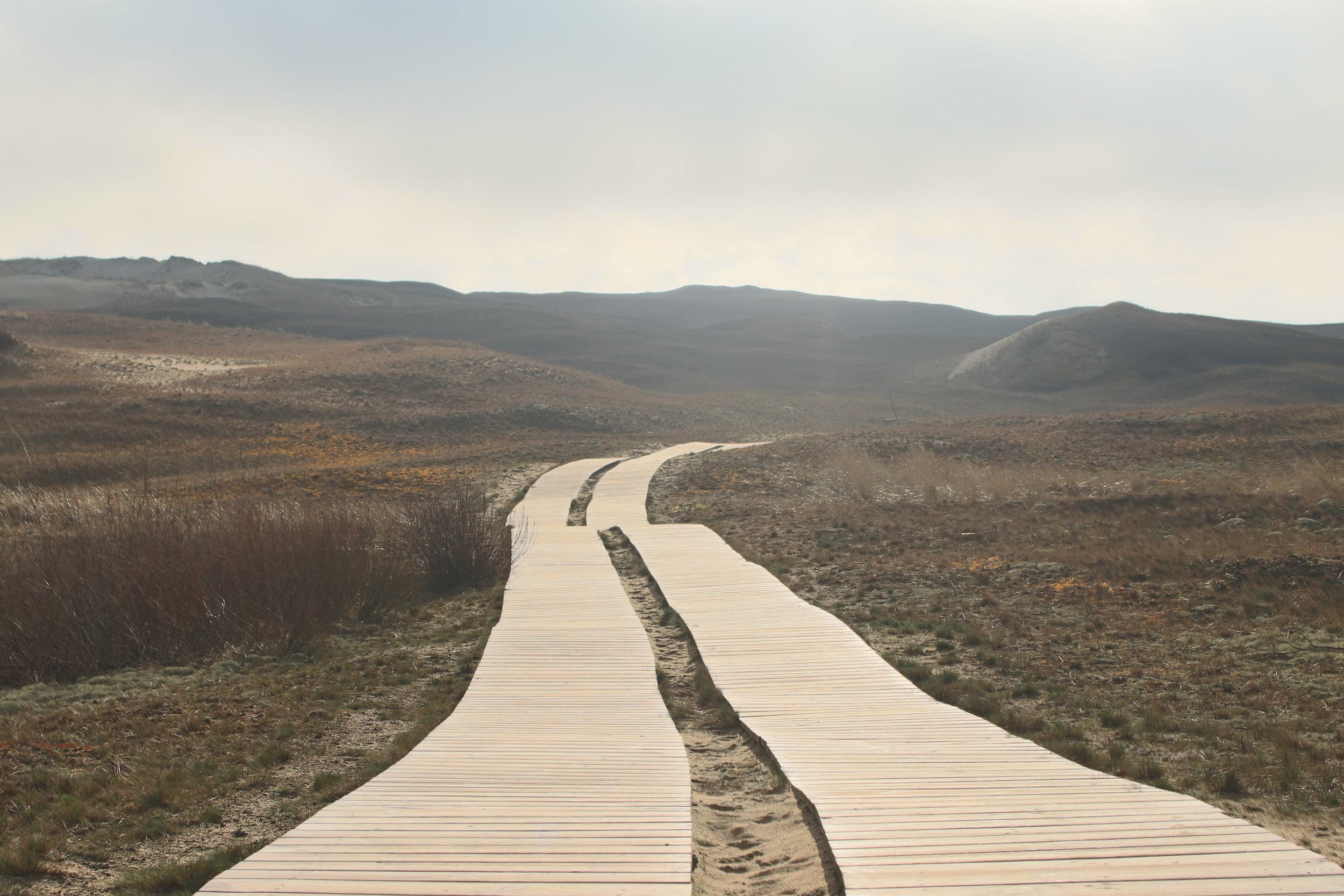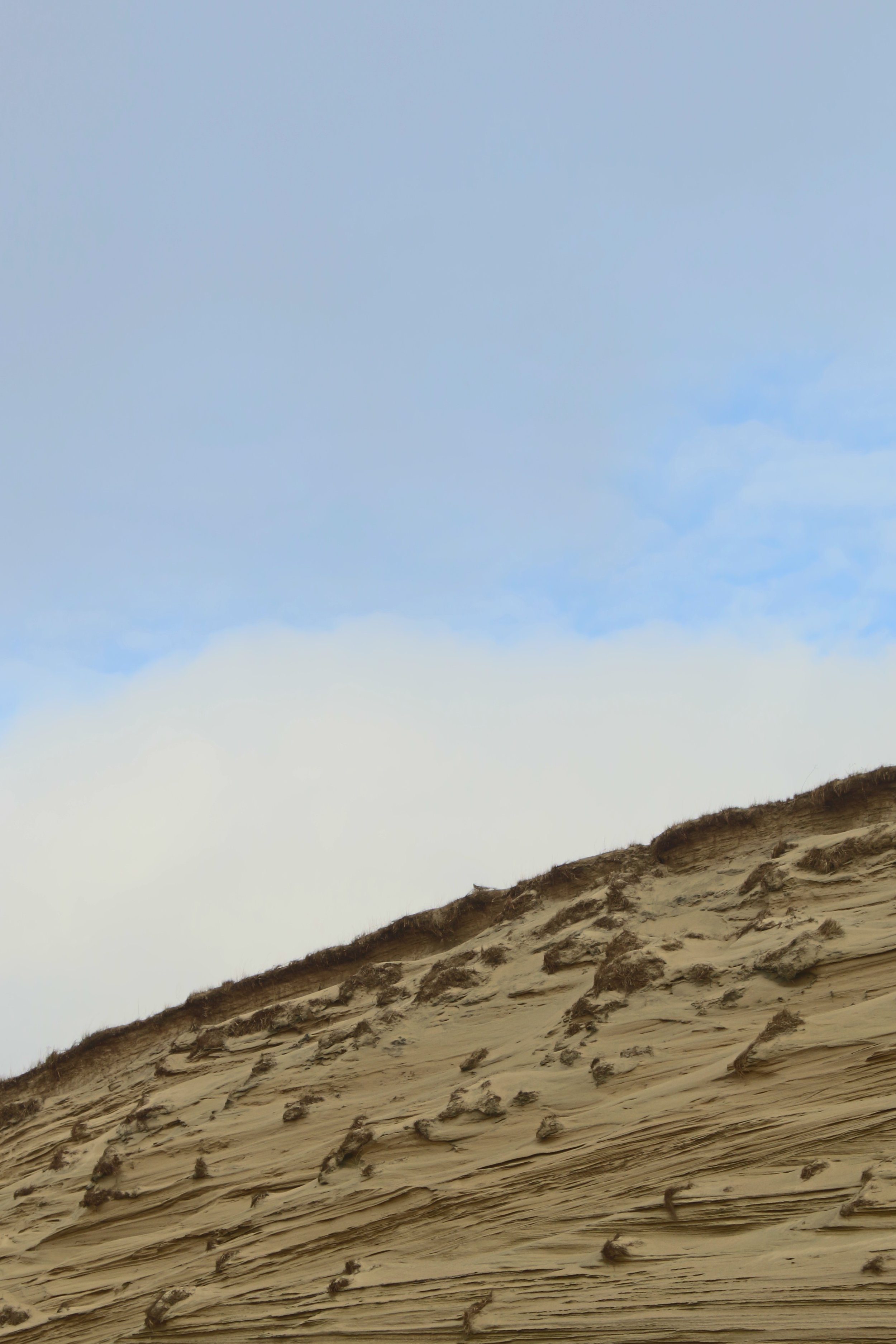The Curonian Spit
Pardinis dunes
The Curonian Spit is a 98 kilometre long, thin, curved sand-dune spit that separates the Curonian Lagoon from the Baltic Sea coast. It is a UNESCO World Heritage Site shared by Lithuania and Russia and was our first stop in the country. We took a very small ferry that brought us on the National Park ground and drove to Nida in order to visit the touristic information centre.
Obviously it was closed as the day was coming to an end, but a nice woman opened it for us in order to give us a map of the dunes and some tips on how to visit them. We ended our day by one of the most beautiful sunset I have ever seen in my life, on top of the Parnidis Dune. With an elevation of approximately 52m, those dunes are the perfect getaway towards calm after a lot of driving hours. Once the sky was covered in dark tones of pink and purple, we walked back to the city centre in order to find some drinkable water we could buy before parking for the night close to the beach.
Jeetees
Nagliai Dunes
In the morning, we drove towards the 1680 Ha area of Nagliai Nature reserve. It stretches from the North to the South on 8 km with the highest dune called Agila, rising at about 53 meters. This area is naturally made by ravines blown by the wind, sand hills covered in a mysterious grassy flora giving to the dunes a strange grey colour, originating their nicknames “the grey”. To access this beautiful scenery, you can park in front of the Nida-Juodkrante bycicle path 15K marker or the 31K one called Smiltyné-nida.
The feeling of being alone in the world was quite strong there. Once we arrived at the end of the wooden path, the view is absolutely breath taking and deserves a pause. I also truly appreciated how protected and respected the landscape was. Indeed, the natural environment of the reserve is very sensitive to visitors, so people are asked to keep strictly to this path when walking in this area.


